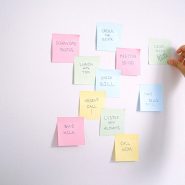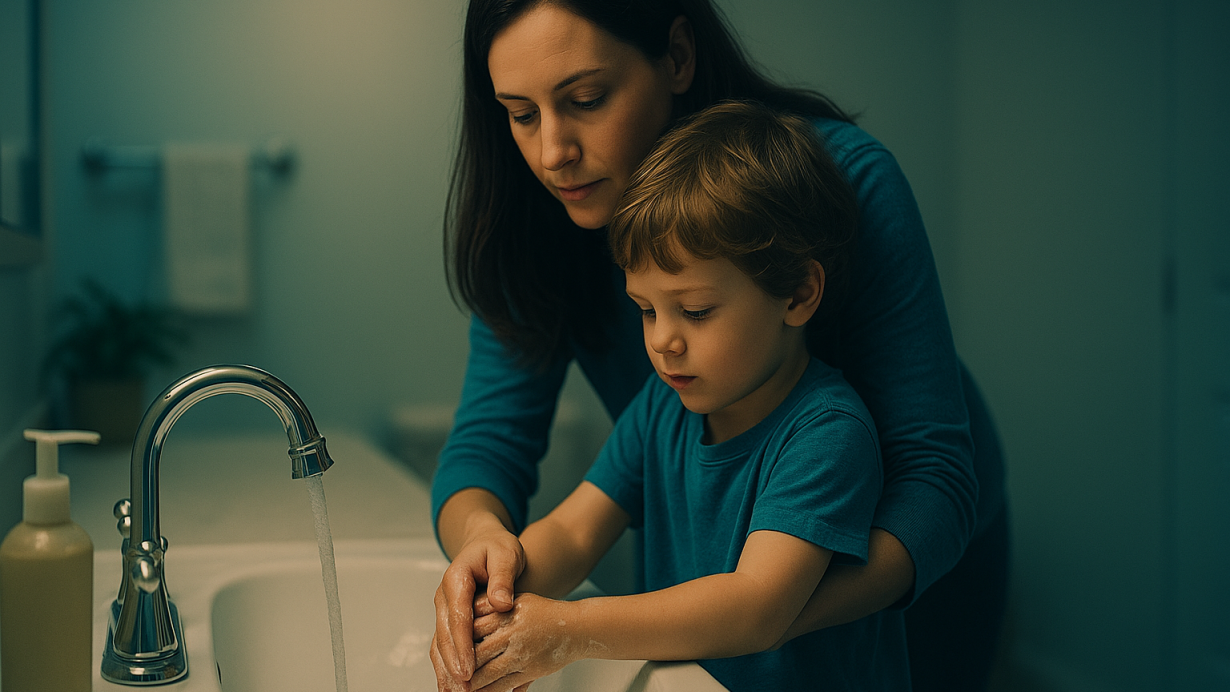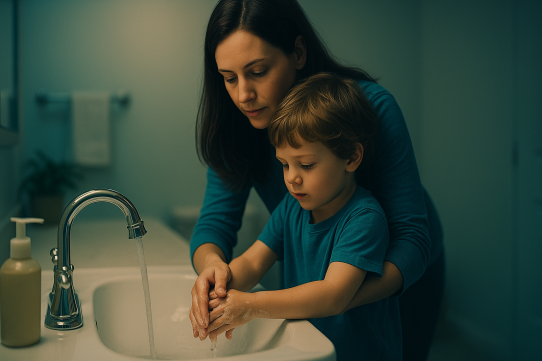For many parents of autistic children, teaching bathroom and self-care skills is one of the biggest milestones — and sometimes, one of the hardest.
What comes naturally to some children can take longer for others, not because of defiance or delay, but because these routines involve sensory, communication, and emotional challenges all at once.
The path to independence is rarely linear. But with patience, structure, and understanding, it’s absolutely achievable. Every small step — every moment of progress — is a victory worth celebrating.
Why Bathroom and Self-Care Skills Can Be Challenging
Toilet training and personal care require complex coordination between the body and brain. For autistic individuals, several factors can make this process more difficult:
- Sensory differences: The sound of flushing, the feel of toilet paper, or the temperature of running water can be overwhelming.
- Communication barriers: Some children may not yet have the words to express discomfort or the need to go.
- Rigid routines: Change or unpredictability in bathroom environments can cause anxiety.
- Interoception challenges: Many autistic people have difficulty recognizing internal body signals such as the need to urinate or defecate.
Understanding these barriers doesn’t mean lowering expectations — it means tailoring the approach to match how your child experiences the world.
Building Readiness at Their Pace
Before beginning formal toilet or self-care training, watch for signs that your child might be ready. These might include:
- Showing awareness of being wet or soiled.
- Staying dry for longer periods.
- Hiding or withdrawing when needing to use the bathroom.
- Showing curiosity about others’ routines.
There’s no universal “right age.” Progress depends on your child’s developmental readiness, sensory comfort, and communication skills — not the calendar.
Start when your child feels secure and predictable routines are in place. Pushing too early can create anxiety, while waiting until they show signs of awareness builds trust and success.
Step 1: Create a Predictable Routine
Autistic children often thrive on structure. A consistent routine helps them know what to expect and reduces anxiety about the unknown.
Try scheduling bathroom visits around the same times each day — for example, after waking, after meals, and before bed. Use visual schedules or picture charts to show each step:
- Go to the bathroom.
- Pull down pants.
- Sit on the toilet.
- Wipe.
- Flush.
- Wash hands.
Simple visuals make abstract steps concrete. For some children, laminating these charts or placing them near the toilet makes all the difference.
Step 2: Address Sensory Challenges
Sensory sensitivities often play a big role in bathroom-related stress. Something that feels minor to adults can feel overwhelming to a child whose senses register the world differently.
Consider these sensory-friendly adjustments:
- Use soft lighting or night-lights instead of harsh bathroom bulbs.
- Let your child choose their own toilet paper texture or use flushable wipes if preferred.
- Offer noise-canceling headphones if the sound of flushing is distressing.
- Allow them to flush only when ready or to leave before the flush if needed.
- Use gentle soaps and unscented products for sensitive skin.
Pay attention to their reactions — small environmental changes can create big comfort.
Step 3: Encourage Communication and Understanding
Whether your child is verbal or nonverbal, communication supports success.
Use simple, consistent phrases like “Time for bathroom,” or visual cues like a toilet picture card. Over time, many children learn to hand you the card or use a gesture to communicate the need.
For verbal children, you might teach phrases such as:
- “I need to go.”
- “All done.”
- “Too loud.”
Pairing verbal language with gestures or visuals reinforces understanding and independence.
Step 4: Practice Body Awareness
Some autistic individuals have limited interoception — the ability to sense internal body cues like hunger, fullness, or the need to use the toilet.
You can help strengthen this awareness by gently connecting sensations to words:
“Your tummy feels tight — that means it’s time to go potty.”
“You’re wiggling your legs — your body might be saying it needs a break.”
Encourage them to notice these signals without pressure. Over time, this builds connection between body and brain.
Step 5: Make It Positive and Predictable
Celebrate progress, even if it’s small. Use positive reinforcement, not punishment.
You might say:
“You sat on the toilet — great job trying!”
“You told me before you needed to go — that’s amazing!”
For some children, a sticker chart, token system, or favorite activity afterward provides motivation. For others, simple verbal praise and consistency work best.
Avoid expressing frustration during accidents — they’re part of learning, not failure. Calm reassurance builds confidence far more than correction ever could.
Step 6: Support Hygiene and Self-Care Routines
Bathroom independence goes hand in hand with self-care skills like handwashing, brushing teeth, and dressing.
For each task:
- Break it down into small, clear steps.
- Use visual prompts — step-by-step images work better than long explanations.
- Model the routine by demonstrating, then guiding hand-over-hand if needed.
- Provide choices — “Do you want to brush your top teeth or bottom teeth first?”
Making routines predictable helps children transition from dependence to autonomy at their own pace.
Step 7: Incorporate Independence into Daily Life
Once basic routines are comfortable at home, gradually extend them to other environments — such as school, therapy, or public places.
Prepare in advance:
- Visit new bathrooms before using them.
- Bring familiar items (like a preferred soap or wipe).
- Communicate with teachers or aides about what supports your child needs.
The more you normalize these experiences across environments, the more confident your child will become.
Step 8: Recognize Regression and Adjust Gently
Regression — temporarily losing progress — is normal, especially during stress, illness, or life changes.
If this happens:
- Avoid punishment or shame.
- Revisit earlier strategies that worked before.
- Provide reassurance that it’s okay to start again.
Autistic children often rely on predictability for comfort. When routines shift, patience and calm repetition help restore confidence.
Step 9: Teach Privacy and Safety
As your child becomes more independent, introduce basic privacy and safety rules:
- Knock before entering a closed door.
- Understand which areas are private.
- Practice modesty at home in a gentle, age-appropriate way.
Use social stories or visual guides to teach these concepts respectfully. Safety and dignity are as important as skill mastery.
Step 10: Celebrate Individual Success
Bathroom and self-care independence may look different for every autistic person — and that’s okay.
For some, success means using the toilet independently every day. For others, it might mean communicating the need, managing part of the routine, or tolerating new textures. Each step is meaningful progress.
Progress doesn’t have to look like perfection. Independence grows from understanding, not pressure.
Supporting Older Children and Adults
Independence doesn’t end in childhood. Some autistic teens and adults continue to need reminders or environmental support, especially when executive functioning challenges make routines difficult.
In these cases, tools like visual checklists, phone reminders, or structured daily planners can help. Compassionate independence means supporting autonomy without removing dignity.
Final Thoughts
Teaching bathroom and self-care independence takes time — often more time than you expect. But every attempt, every cue recognized, every successful moment is a milestone worth acknowledging.
These routines aren’t just about hygiene; they’re about self-respect, comfort, and confidence. By slowing down, observing carefully, and honoring sensory needs, parents and caregivers help autistic individuals achieve one of the most empowering forms of independence there is — caring for themselves.
Progress may come slowly, but it always comes. What matters most is not how quickly your child learns, but how supported and respected they feel along the way.








